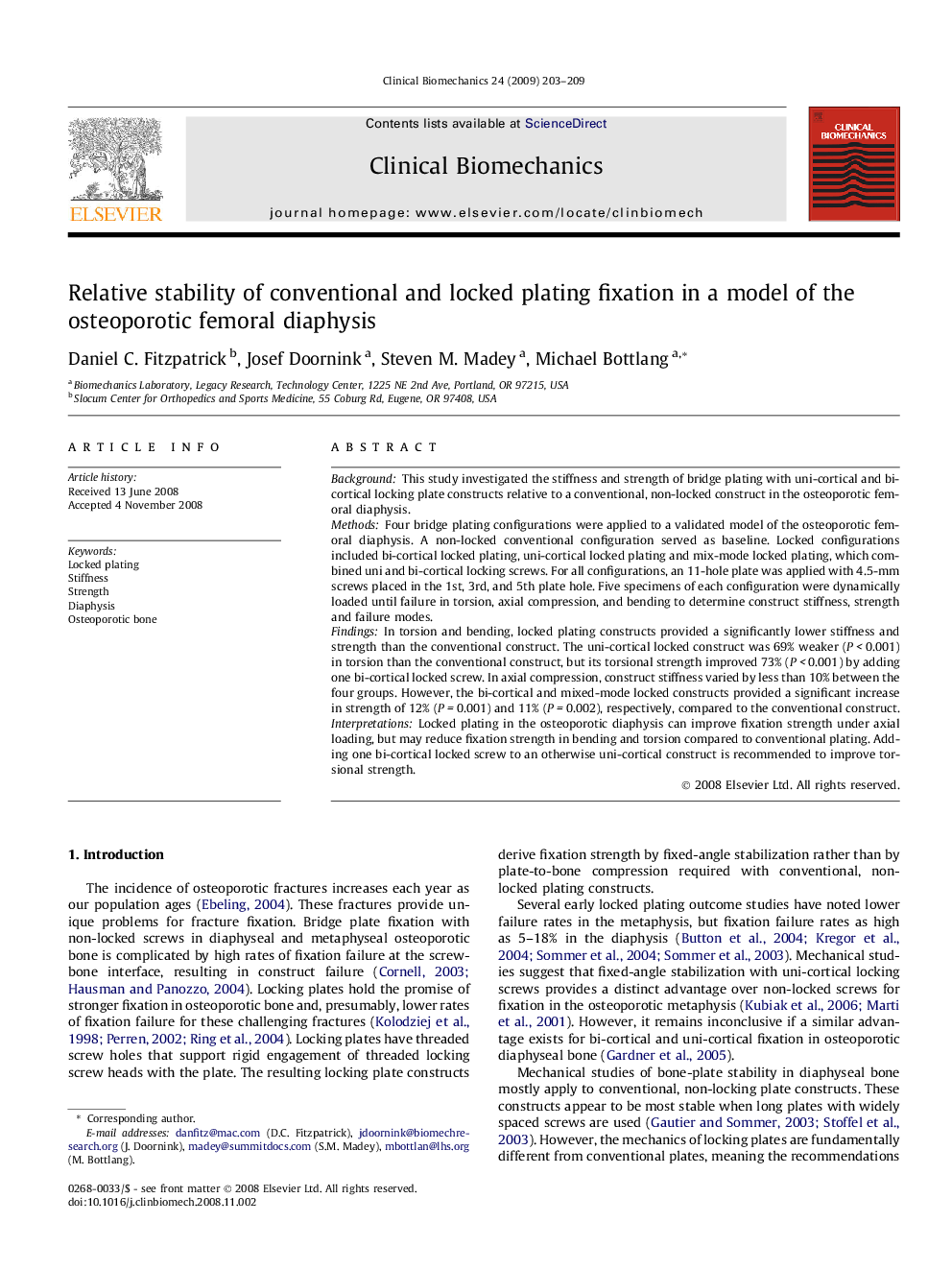| Article ID | Journal | Published Year | Pages | File Type |
|---|---|---|---|---|
| 4051029 | Clinical Biomechanics | 2009 | 7 Pages |
BackgroundThis study investigated the stiffness and strength of bridge plating with uni-cortical and bi-cortical locking plate constructs relative to a conventional, non-locked construct in the osteoporotic femoral diaphysis.MethodsFour bridge plating configurations were applied to a validated model of the osteoporotic femoral diaphysis. A non-locked conventional configuration served as baseline. Locked configurations included bi-cortical locked plating, uni-cortical locked plating and mix-mode locked plating, which combined uni and bi-cortical locking screws. For all configurations, an 11-hole plate was applied with 4.5-mm screws placed in the 1st, 3rd, and 5th plate hole. Five specimens of each configuration were dynamically loaded until failure in torsion, axial compression, and bending to determine construct stiffness, strength and failure modes.FindingsIn torsion and bending, locked plating constructs provided a significantly lower stiffness and strength than the conventional construct. The uni-cortical locked construct was 69% weaker (P < 0.001) in torsion than the conventional construct, but its torsional strength improved 73% (P < 0.001) by adding one bi-cortical locked screw. In axial compression, construct stiffness varied by less than 10% between the four groups. However, the bi-cortical and mixed-mode locked constructs provided a significant increase in strength of 12% (P = 0.001) and 11% (P = 0.002), respectively, compared to the conventional construct.InterpretationsLocked plating in the osteoporotic diaphysis can improve fixation strength under axial loading, but may reduce fixation strength in bending and torsion compared to conventional plating. Adding one bi-cortical locked screw to an otherwise uni-cortical construct is recommended to improve torsional strength.
